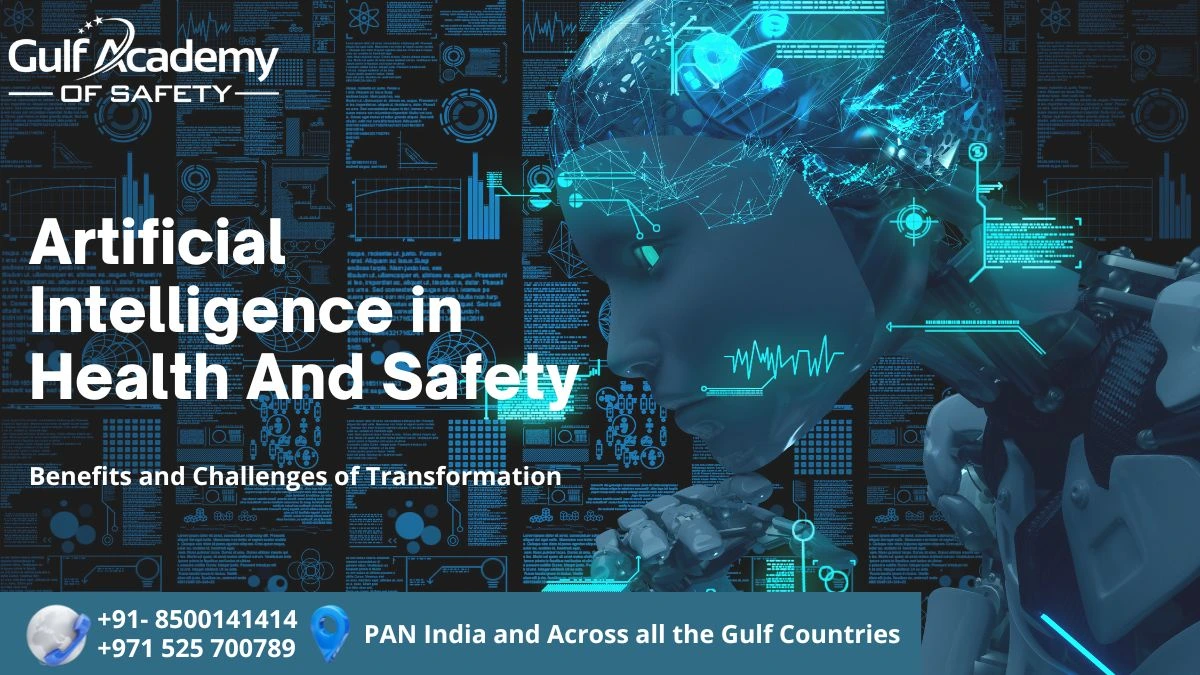
NEBOSH Online Conference 2025: Empowering Global Safety Professionals — Sponsored by Gulf Academy of Safety
In today’s rapidly evolving industries, safety isn’t just a regulation

Industries around the world are being transformed by artificial intelligence (AI). Including health and safety, integrating AI into workplace safety practices is revolutionizing the way we identify, assess, and mitigate risks. Make workplaces safer and more efficient This article explores the transformative impact of AI in health and safety. Highlighting benefits, challenges, and applications.
Predictive analytics powered by artificial intelligence improve health and safety practices. Real-time monitoring and automatic decision-making By leveraging large data sets, AI can identify potential hazards and recommend preventive measures before accidents occur.
Predictive Analytics: AI algorithms analyze historical data to predict high-risk situations. Helping various organizations Proactively manage workplace safety.
Real-Time Monitoring: AI-powered sensors and devices monitor environmental conditions such as air quality and noise levels. Maintaining compliance with safety standards continuously.
Automation of Duplicate Tasks: AI automates routine inspections. Free up human resources for complex decision-making tasks.
Also Read about: Fire Safety Tips for Secure Environment | Essential Steps for HSE Career
Improved Hazard Detection: AI can detect subtle patterns in system data that are missed by human observation. It identifies risks such as equipment failure or unsafe working conditions…
Improve Efficiency: Automated safety inspections and tracking reduces manual workload. This allows for faster and more accurate responses to safety concerns.
Cost Savings: By reducing the time it takes to prevent accidental downtime, AI reduces costs associated with workplace injuries, lawsuits, and regulatory penalties.
Personal Safety Training: AI-powered training platforms can assess individual learning needs. and provide tailored safety education. Improve overall employee efficiency
Data Privacy and Security:
Using AI involves storing and processing large amounts of sensitive data. Data breaches and privacy violations are raising concerns.
High Startup Costs:
Implementing AI technology can be expensive, requiring significant investments in hardware, software, and training.
Resistance to Change:
Employees and executives may be reluctant to adopt AI due to fear of being fired or a lack of understanding of AI’s benefits.
Compliance:
Ensuring that AI systems comply with health and safety regulations can be complex, taking into account different standards across industries and sectors.
Wearable technology:
Smart helmets and vests equipped with AI can monitor worker health measurements such as heart rate and body temperature. By alerting them to potential risks such as heat stress.
Robot Help:
AI-powered robots are used in hazardous environments, such as chemical plants, where they can be dangerous for human workers…
Incident Analysis:
AI tools can analyze accident reports and safety records to find trends and root causes. Help develop more effective safety protocols.
Read More about the benefits of Health and Safety Courses Online
As AI continues to develop Its role in health and safety will also expand. Innovations such as machine learning algorithms natural language processing and advanced robotics It promise to make workplaces safer too, however, organizations will need to address ethical concerns and invest in training to ensure a smooth transition.

In today’s rapidly evolving industries, safety isn’t just a regulation

The UAE is recognized as a global leader in building

In an era where workplace safety, environmental stewardship, and sustainable